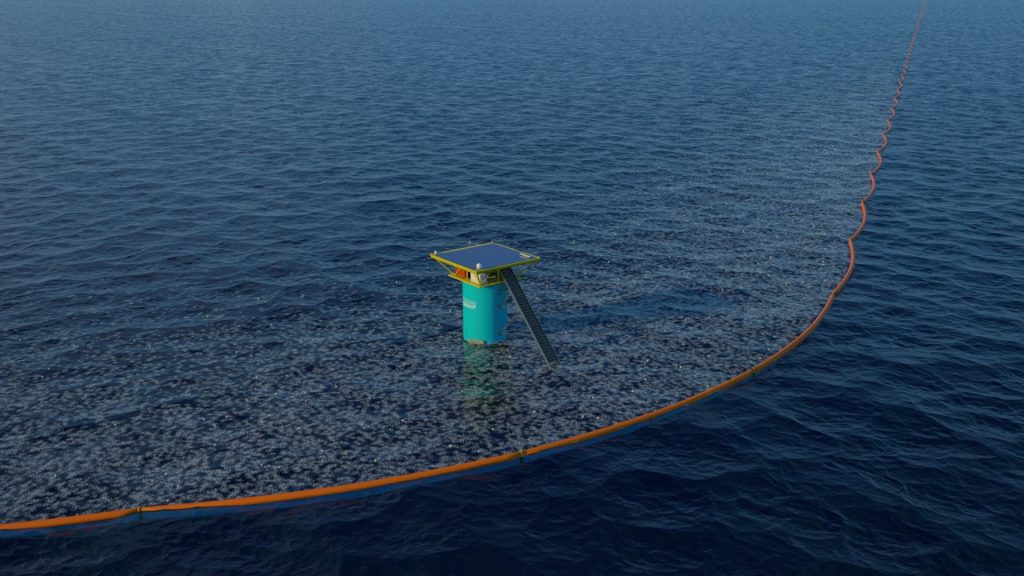 By B.N. Frank
By B.N. Frank
The ocean is full of plastic debris and we know it’s harming the ecosystem. There’s little doubt that this young inventor’s intentions were good in wanting to clean this up. Eventually $30M was raised to build his first system called The Ocean Cleanup.
Despite his presumably good intentions, many environmentalists and scientists started providing valid reasons years ago why “The Ocean Cleanup” system was a bad idea, including that it would actually harm the ocean’s ecosystem during the cleaning process:
3. The project will harm wildlife.
Martini and Goldstein point out thatthe only other approach that’s even close to workable would be for The Ocean Cleanup to use so-called anti-biofouling coatings on their equipment, to slow down the rate at which the structures are colonized by marine life.
Though research is being done into new surfaces that are resistant to biofouling, using nanomaterials technology, the standard anti-biofouling coatings in use these days are chemical treatments that contain “biocides.” Biocides are pretty much what they sound like: substances that kill living things. The idea is that biocides incorporated into the coatings will deter organisms from forming that biofilm that starts the biofouling process.
The problem is, anti-biofouling coatings have a finite effective lifespan. And that’s in part because the biocides leach out of the coatings.
Imagine 24,000 kilometers of boom coated with anti-biofouling coatings leaching biocides into the ocean — from a project intended to benefit marine life.
[…]
The booms pose physical threats to marine life as well. The designers claim that neutrally buoyant microorganisms such as plankton will merely flow beneath the three-meter skirts. That may be true for some species, but marine biologists point out that the North Pacific gyre (for instance) has planktonic organisms that don’t stray from the highly oxygenated waters found right at the surface of the ocean, and that such species would likely be swept up in large numbers. Any plankton that’s swept up into the collectors will be separated out by centrifuge, the effects of which Miriam Goldstein described thusly in a marine scientists’ email list server conversation:
Most zooplankton don’t survive being caught in a standard manta net, never mind being spun in a centrifuge. They might still be twitching, but they have lost a lot of their important parts, like antennae and feeding apparatus. When we want to capture live zooplankton, we use special live-collection nets and are very, very careful. For gelatinous zooplankton like salps, the only way to bring them up in good condition is to individually capture them in glass jars on SCUBA. I am highly skeptical that any significant proportion of zooplankton are viable after caught in a net and spun at 50 RPM.
As for larger organisms, the feasibility study itself says this:
Highly migratory species will be highly affected by this project. Swordfish, marlin, sailfish, sharks, tuna-like species are all highly susceptible to being caught in the holding tanks, and possibility diverted by the booms into the platform.
[…]
One wonders just how much help from The Ocean Cleanup the oceanic wildlife of the world can withstand.
As I learned more about the cleanup system, I couldn’t help thinking about how $30M could have been raised and spent on paying people to assist with safely cleaning up the ocean rather than outsourcing more jobs to risky technology.
We now know that the $30M array doesn’t work. This hasn’t deterred the young inventor and his supporters, though. More money will be raised for improving the system even though experts say it may never work right and may also HARM the ocean. All of this considered, it seems egotistical and just plain dumb to throw more money at risky technology when they could instead raise money to pay people RIGHT NOW to safely clean the ocean.
This whole situation reminds me of all new risky technology inventions – especially utility “Smart” Meters. Adding insult to injury, these meters have been funded by taxpayer dollars. They have been highly promoted as being helpful to people as well as the environment even though it has been proven over and over again that they are hazardous in a variety of ways – including environmentally. An online documentary was made in 2013 about these meters. It was updated in 2017 and is now free to watch online.
There was never anything wrong with the original analog meter technology. Regardless, in many places, taxpayer money is still being spent to install an/or replace dangerous harmful “Smart” Meters with more dangerous harmful “Smart” Meters.
If utility companies wanted to save money by firing all the meter readers, they could have allowed us to call in our measurements and/or estimated our meter readings. Perhaps they could have even provided us with technology (like phone apps) to submit our readings ourselves.
There will always be people who will continue insist that risky and dangerous technology is the only way to solve problems – even when they are so obviously wrong and doing so much damage.
We’ve arranged a society based on science and technology in which nobody understands *anything* about science and technology. And this combustible mixture of ignorance and power sooner or later is going to blow up in our faces.– Carl Sagan

Be the first to comment on "Potentially Harmful Autonomous $30M “The Ocean Cleanup” System Doesn’t Work. Can’t They Now Just Raise Money to Hire People to Safely Clean the Ocean?"